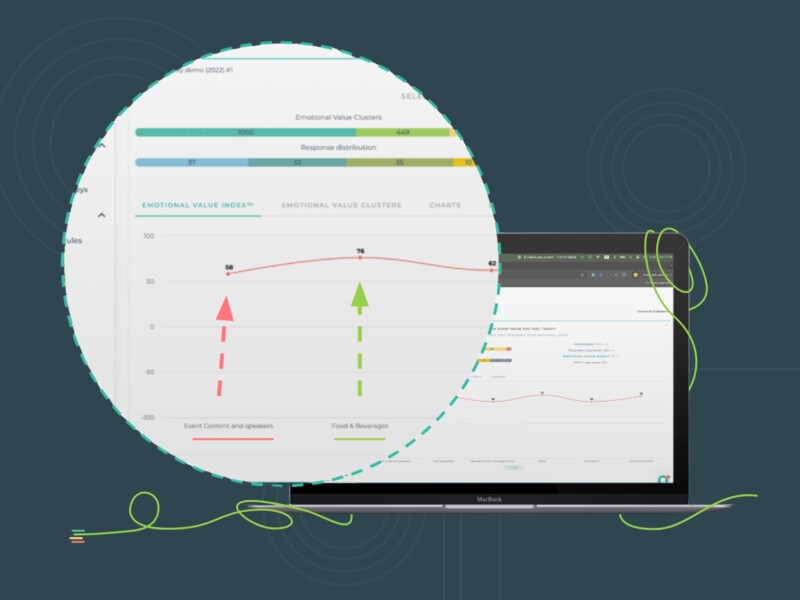If you are just starting off with a Customer Experience (CX) program for your brand, you would know the importance of using CX metrics to measure the effectiveness of your program. Only metrics can help you understand if customers’ perception of your brand has really improved.
Net Promoter Score (NPS) is used by businesses of any industry and size. It’s an alternative to EVI, CSAT, and CES. In fact, it is one of the most frequently used CX metrics to identify and improve the quality of customer experience in their organizations. NPS is not always the best metric, but it can work if used correctly.
If you are interested to know more, keep reading our article to learn about it!
What is Net Promoter Score?
Bain’s Net Promoter Score, abbreviated as NPS is a CX metric that estimates the likeliness of customers in promoting your business to others. Simply defined, NPS measures the power of word-of-mouth marketing of your business at the “advocacy or loyalty” phase of the customer journey.
The metric aims to calculate the percentage of promoters and detractors regularly to help businesses understand the effectiveness of their customer experience strategies. It’s a very simple metric that reflects a lot of aspects about a brand and one of the key metrics that help businesses succeed through CX.
By taking the perspective of the customer, the score helps you understand your brand as it is – as opposed to how you perceive it is. It looks at the potential of your business to grow organically.
How to Calculate NPS?
Net Promoter Score is easy to calculate and can help you understand the efficacy of the overall organization, a single department, or a product/service. In order to calculate it, you have to send out a survey consisting of the following question.
“How likely is it that you would recommend us to a friend or colleague?”
The respondents would answer the question by rating the likeliness on a scale of 0-10, ranging from “not at all likely” to “extremely likely.” Based on their response, each respondent is categorized under one of the three types.
-
Promoters
Promoters are those who have rated 9 or 10, implying high satisfaction. They are identified as the most loyal segment of customers who will advocate on behalf of the business recommending the product/service for people they know.
-
Passives
Customers who rate 7 or 8 are identified as passives indicating moderate satisfaction. Although they are not dissatisfied, they won’t promote the business to others as they are not enthusiastic about the brand. They are also more likely to switch.
-
Detractors
Detractors are respondents who rated 6 or lower value, implying dissatisfaction. They are more threatening to a brand as they can discourage others from doing business with you as well.

Net Promoter Score = Percentage of Promoters – Percentage of Detractors
With more promoters, a business can conclude that it’s providing a commendable customer experience to others. More detractors would mean that it should fine-tune or position its strategies better. By constantly monitoring the NPS, a business should try to increase the percentage of promoters, thereby gaining a high NPS value.
Check out also our free NPS Calculator here

What to Consider When Calculating NPS?
Here are some important points to consider when calculating NPS and making decisions based on the gathered data.
- If you are hoping to calculate NPS separately for different demographics of your customers, you would have to include a set of additional questions regarding age, gender, or income to segment the responses easily.
- Different customers can have different reasons for their response and the best way to determine the underlying reasons for their rating is through an open-ended question. It will help them reveal their pain points or reasons for satisfaction.
- Be prompt in sending out surveys. If you need fresh responses, you need to gather them at the right time by sending automated surveys in real-time.
- Pay attention to all three categories of respondents. Respond to their feedback and close the loop because it means you have taken their response seriously. If you have fixed an issue customers have pointed out, let them know about it as well.
- It’s also important to note that NPS alone is not sufficient to determine CX as it won’t be able to capture the entire picture. So, when making decisions based on NPS, make sure you also consider other metrics such as CES and C-SAT.
- Before making decisions based on NPS, consider the sample size. If the sample isn’t significant to make dramatic changes, maybe you should focus on collecting more responses before arriving at conclusions.




